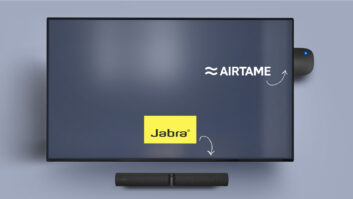 Hybrid working is here to stay. The most recent ONS figures reveal that more than a third (38%) of the population now work fully or partly from home. The vast majority report an improvement in work-life balance. Yet this newfound freedom to work when and where we want comes at a price. What happens to team-building, brainstorming and relationship-building when fewer of us are in the office at the same time, if at all?
Hybrid working is here to stay. The most recent ONS figures reveal that more than a third (38%) of the population now work fully or partly from home. The vast majority report an improvement in work-life balance. Yet this newfound freedom to work when and where we want comes at a price. What happens to team-building, brainstorming and relationship-building when fewer of us are in the office at the same time, if at all?
Can hybrid work still deliver the best of both worlds? The key to ensuring it does may lie with how effectively employees can learn the new etiquette of hybrid working. A new guide from modern manners experts Debrett’s provides insight on how we should behave in the hybrid era. Here’s a few things we should be mindful of.
Data shows that nearly 2.8 billion users visited Zoom in the last three months of 2022. Even that is likely to represent just a small snapshot of total activity on video conferencing platforms by hybrid workers. The result is that the way we look and act online is increasingly important as we adapt to a new way of working.
CHANGED BEHAVIOUR
Yet many of us haven’t taken time out to understand what this really means. How exactly should we change our behaviour when interacting in a virtual meeting? How can we ensure there’s an equal meeting experience for all participants, wherever they’re located? And what should we wear? While attendees will expect home workers to present themselves in more casual, relaxed clothing, there are limits. Individuals should dress like they’re in the same room as the other attendees, and remember that striped and patterned clothing can have an unintended but distracting appearance on screen.
Appearances go beyond what employees are wearing. It’s also about what’s in their background. Colleagues should be focusing on the individual in shot, not that over-sized piece of distracting art behind them. Or the heap of unwashed clothes in the corner of the room. It pays to think about these things pre-call. A neutral backdrop, a webcam that’s level with the user’s eyes, and no bright lights shining into it are a good place to start. Workers should try to hole up in a private room if possible – whether at home or in the office. Blurring the background and telling nearby colleagues or housemates to lower the volume may also make sense.
Employees should avoid video motion sickness. That means keeping the laptop, tablet or other device in a fixed position, rather than carrying it with them around the office or to answer the front door. It doesn’t make the caller appear more dynamic or engaged in the meeting, it just gives their colleagues a headache. Better to apologise and step away for a second if it is necessary. Or better still, just sit tight during the meeting.
The audio experience is also critical in the new world of hybrid working – especially for meeting attendees unable to get themselves in front of a webcam. Sometimes not everyone can do so, especially if they’re travelling or are juggling out-of-hours commitments. This is where a little training can go a long way. Ensure meeting organisers understand if there are any audio-only participants. If so, know that these attendees should be clearly introduced at the beginning, made to feel included and given enough time to interact with colleagues. It’s also important not to talk over each other, especially as those on audio only will lack the visual clue of a raised hand. Long pauses should be embraced as a way to give participants space to interject or expound.
BACKGROUND NOISE
Audio is important in other ways too – specifically background noise. Using the mute function is a good tip for anyone calling in from a noisy environment like an airport or café. Workers should hit mute before they join so that colleagues won’t be disturbed by ringtones, or any distracting pings issued from open applications and programmes. The same is true of meetings joined from the office. Turning down background noise such as office radios and asking colleagues to be considerate is absolutely acceptable ahead of important online meetings.
These types of changes may not happen overnight. But with greater awareness of the potential pitfalls of online meetings, employees can set themselves up for success. With over half (59%) of bosses now believing hybrid working increases profits, and 88% keen to explore progressive post-pandemic workplace policies, there’s no putting the genie back in the bottle now.
That makes good working etiquette increasingly important as employees navigate a new world of work. When done right, it can help them remain focused and productive, optimising their use of audio and visual technology to stay connected wherever they are. By observing a few ground rules in advance, staff can tap the transformational benefits of hybrid working and play their part in building a closer-knit office culture. This will ensure equality in the hybrid work experience, regardless of where people are working from.







